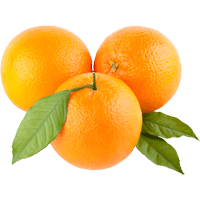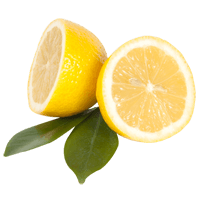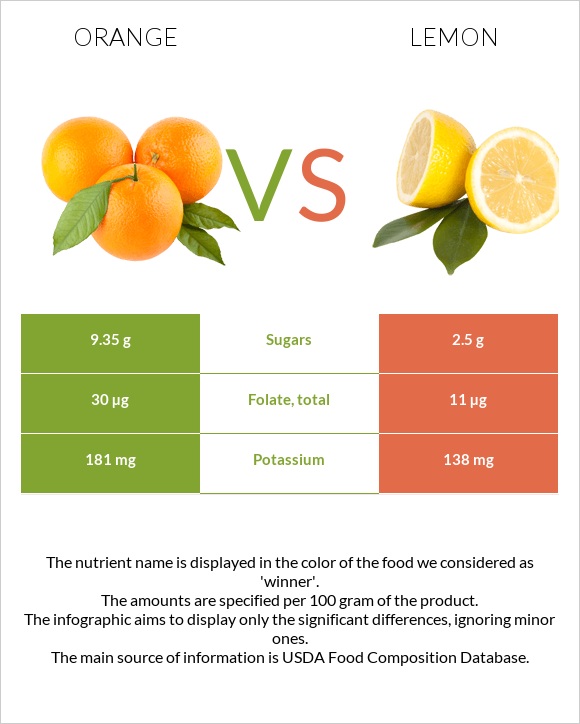How Much Vitamin C Does 1 Lemon Have

vs

Summary
Oranges contain more calories and carbohydrates due to sugars, and lemons are richer in protein, fats, and fiber. The two are similar in the amounts of vitamin C.
Oranges overall are richer in both vitamins and minerals, containing more vitamin A, vitamin E, vitamins B1, B2, B3, B5, and B9, as well as calcium, potassium, magnesium, copper, and zinc. Lemons, on the other hand, contain higher concentrations of vitamin B6, iron, and phosphorus.
Both possess cardioprotective, antidiabetic, anticancer, and antimicrobial qualities.
Both oranges and lemons can be very beneficial if used correctly, and the choice depends on the situation and personal preference.
Table of contents
- Introduction
- Nutrition
- Vitamins
- Vitamin C
- Minerals
- Health Impact
- Cardiovascular Health
- Antioxidant Effects
- Cardioprotective Effecfts
- Antihypertensive Effects
- Cerebrovascular Protection
- Diabetes
- Glucose and Insulin Response
- Obesity
- Diabetic Nephropathy
- Cancer
- Antimicrobial Effects
- Allergy
- Antiallergic Qualities
- Sources.
Introduction
Oranges and lemons are often the fruits that come to mind when we think of good sources for vitamin C. They are both citrus fruits belonging to the Rutaceae family and the Citrus genus and both hybrids. A genomic study has shown that oranges (Citrus × sinensis) are a hybrid between pomelo and mandarin (1), whereas lemons are said to be a hybrid between sour (Seville, bitter or Citrus × aurantium) orange and citron (2). In this article, the word "orange" refers to the sweet orange or Citrus × sinensis, as it is the most commonly used species of oranges.
Nutrition
Oranges contain more calories and carbs due to sugar, while lemons are higher in protein, fats, and fiber. Both fruits naturally do not contain cholesterol.
When it comes to the glycemic index, both oranges, and lemons, as most citrus fruits, fall under the classification of low glycemic index foods.
While an exact number has not yet been calculated for the glycemic index of lemons, the glycemic index of raw oranges from Canada is 40.
You can find full texts on the glycemic impact of orange and lemon.
One serving size of an orange is equal to one fruit that weighs around 131g. Lemon's serving size is much smaller, equalling 58 grams.
If you are on a low-carb or a low-calorie diet, lemons are the right choice for you out of these two fruits. Orange is the preferable choice for a low-fat diet.
Acidity
Lemons often taste sourer than oranges. The fruit's acidity decides this difference in taste. The acidity of lemon varieties falls between 5 to 7%, primarily due to the citric acid content, as opposed to the 1% in oranges (3). The pH of oranges is calculated to be in the range of 3,69-4,34, whereas the pH of lemons is around 2 to 2,6 (4). The pH of lemon juice also ranges around the same numbers as the pH of a lemon. Therefore, lemons are more acidic than oranges.
Once oranges and lemons are fully digested and metabolized, the citric acid becomes alkaline in the body. Based on the potential renal acid load (PRAL), oranges are more alkaline-forming.
Vitamins
Oranges are overall richer in vitamins, being higher in vitamin A, vitamin E, vitamins B1, B2, B3, B5, and B9. The only vitamin that lemons contain more of is vitamin B6.
Both oranges and lemons lack vitamin D, vitamin K, and vitamin B12.
Vitamin C
Vitamin C is one of the most important nutrients found in citrus fruits, for which they are famous. Lemons and oranges have approximately the same amount of vitamin C, with orange's vitamin C content only slightly higher. Both oranges and lemons contain more vitamin C in their zests or peels.
However, raw lemon juice is richer in vitamin C compared to orange juice.
Vitamin Comparison
Vitamin comparison score is based on the number of vitamins by which one or the other food is richer. The "coverage" chart below show how much of the daily needs can be covered by 300 grams of the food
![]()
8
:
1
![]()
Contains more Vitamin A +922.7%
Contains more Vitamin E +20%
Contains more Vitamin B1 +117.5%
Contains more Vitamin B2 +100%
Contains more Vitamin B3 +182%
Contains more Vitamin B5 +31.6%
Contains more Folate +172.7%
Contains more Vitamin B6 +33.3%
Contains more Vitamin A +922.7%
Contains more Vitamin E +20%
Contains more Vitamin B1 +117.5%
Contains more Vitamin B2 +100%
Contains more Vitamin B3 +182%
Contains more Vitamin B5 +31.6%
Contains more Folate +172.7%
Contains more Vitamin B6 +33.3%
Minerals
Oranges also win in the minerals category. They contain higher concentrations of calcium, potassium, magnesium, copper, and zinc. Lemons, on the other hand, are much higher in iron and contain more phosphorus as well. Lemons also contain sodium, whereas oranges do not.
Mineral Comparison
Mineral comparison score is based on the number of minerals by which one or the other food is richer. The "coverage" chart below show how much of the daily needs can be covered by 300 grams of the food
![]()
6
:
2
![]()
Contains more Calcium +53.8%
Contains more Potassium +31.2%
Contains more Magnesium +25%
Contains more Copper +21.6%
Contains more Zinc +16.7%
Contains less Sodium -100%
Contains more Iron +500%
Contains more Phosphorus +14.3%
Contains more Calcium +53.8%
Contains more Potassium +31.2%
Contains more Magnesium +25%
Contains more Copper +21.6%
Contains more Zinc +16.7%
Contains less Sodium -100%
Contains more Iron +500%
Contains more Phosphorus +14.3%
Health Impact
Oranges and lemons, like all citrus fruits, are rich in phytochemicals that provide many protective qualities. These phytochemicals include flavonoids (naringenin, hesperidin), carotenoids (beta-carotin, lutein), coumarins, phenolic acids, and many others.
Cardiovascular Health
Antioxidant Effects
Reactive oxygen species are the chemicals often involved in heart disease. These are chemically reactive compounds that can be toxic to cells, damaging macromolecules, such as lipids, proteins, and nucleic acids. Phenolic compounds found in citrus fruits can directly absorb, neutralize these chemicals and inhibit enzymes associated with this pathogenesis. Polyphenols can also enhance the natural human antioxidants (5).
Cardioprotective Effecfts
Many studies have shown foods high in flavonoids to lower blood cholesterol and triglyceride levels. Lemons, in particular, have been shown to reduce low-density lipoproteins, commonly referred to as "bad cholesterol," and increase high-density lipoproteins, often called "good cholesterol" (6).
Flavonoids can also prevent hyperglycemia by increasing the formation of glycogen molecules from glucose and inhibiting the synthesis of glucose in the liver (5)․
Atherosclerosis is the leading cause of heart disease and stroke. Naringenin and hesperetin are flavonoids that also possess antiatherogenic abilities by promoting fatty acid breakdown. Oranges contain comparatively high levels of naringenin, whereas lemons are rich in hesperetin (7).
Antihypertensive Effects
People with high blood pressure are advised to decrease their sodium intake. Luckily oranges do not contain sodium, and lemons are low in this mineral.
A study has shown that high flavonoid juice consumption can reduce diastolic blood pressure due to flavonoids such as naringin and narirutin (8).
Intake of lemon has also been proven to have an inverse association with systolic blood pressure (9).
Cerebrovascular Protection
One research has concluded that citrus consumption reduces the risk of cerebrovascular diseases, such as ischemic stroke and intracerebral hemorrhage (10).
Diabetes
Glucose and Insulin Response
Studies in experimental diabetes models demonstrate the efficacy of citrus flavonoids to improve glucose tolerance, increase insulin secretion and sensitivity, decrease insulin resistance, reduce hepatic glucose production and intestinal glucose absorption, enhance peripheral glucose uptake, suppress inflammation, and modulate the activity of enzymes and transporters involved in glucose and lipid metabolism (11). The flavonoids with strong antidiabetic activities are hesperidin, naringin, and nobiletin (5)
Consuming lemon or lemon juice along with bread or other starchy foods has been proven to reduce the impact of glycemic response through premature inhibition of the α-amylase enzyme in the saliva that breaks down carbohydrates (12).
A study has also shown that 1000mg of vitamin C consumption a day leads to decreased levels of blood sugar, total cholesterol, triglycerides, low and high-density lipoproteins, as well as serum insulin (13).
Obesity
Citrus flavonoids modulate different signaling pathways involved in adiposity and fat cell differentiation and hence could be of significant value for the development of antiobesity agents (11).
Polyphenols found in citrus fruits can assist obesity management since they cause a reduction in fat cell differentiation, lipid content in the cell, and programmed death of fat cells. They can also potentially alleviate complications present in obesity by reducing cytokines, which are responsible for inflammatory processes (14).
Diabetic Nephropathy
Diabetic nephropathy is a severe complication due to diabetes mellitus type 2, which leads to end-stage renal disease. A study has concluded that red orange and lemon extract has the ability to prevent this complication, owing to the strong antioxidant qualities of anthocyanins (15).
Cancer
The phytochemicals within citrus fruits have been associated with a reduced risk of cancers, especially digestive and upper respiratory tract cancers. This effect was significant even with moderate citrus fruit consumption (16).
The phytochemicals that have shown anticancer abilities include flavonoids, limonenes, and coumarins. The effects have been studied against gastric cancer, breast cancer, formation of lung tumors, formation of tumors of the colon, hepatocarcinogenesis, and blood stem cell malignancies (5).
Lemons are particularly rich in limonenes, which have been studied to have antiproliferative effects on human breast cancer cells (17). This effect is stronger in estrogen-responsive breast cancers due to limonene's anti-aromatase quality, which inhibits androgens' transformation into estrogens.
Not only fresh citrus fruits but also their juices and other derivatives can act as a potential resource against various cancers (18).
Antimicrobial Effects
Essential oils of orange and lemon fruits have expressed bacteriostatic (stopping bacteria's reproduction) and bactericidal (killing the bacteria) effects, primarily due to the limonene concentration (7).
Another phytochemical naringenin, a flavonoid that oranges are especially rich in, has been shown to repress Salmonella bacterium's pathogenicity and cell motility (19). This flavonoid and some others may also modulate intestinal microflora by serving as an antipathogenic agent against Escherichia Coli (20).
Allergy
Citrus allergies are quite rare but do occur. A person allergic to citrus fruits may have symptoms shortly after coming in contact with fruits, such as oranges and lemons. An allergy to the compound called limonene can cause contact dermatitis (21). However, food allergies are more common, causing symptoms such as oral allergy syndrome (itching, swelling, tingling, or redness of the mouth area), nausea, diarrhea, and in rare cases, even anaphylaxis.
The allergens identified in citrus fruits are lipid transfer proteins, profiling, and pectin, as well as limonene. Some of these allergens may have cross-reactions with other common allergens, such as pollen, apples, or peaches (22, 23).
People can also be sensitive to citric acid, which is not considered to be an allergy, as citric acid does not cause an immune response in the organism (24).
Antiallergic Qualities
For allergic people who are not sensitive to citrus fruits, these fruits may serve as natural medicine. Flavonoids naringenin and hesperidin, which oranges and lemons are rich in, have been studied to reduce allergy symptoms and suppress inflammatory compounds (25).
Oral administration of aqueous extracts of citrus fruit peels has also been studied to demonstrate antiallergic and anti-inflammatory qualities (26).
Sources.
- https://www.nature.com/articles/nbt.2906
- https://www.sciencedaily.com/releases/2011/01/110118101600.htm
- https://www.yara.us/crop-nutrition/citrus/managing-fruit-acidity/#
- https://www.clemson.edu/extension/food/food2market/documents/ph_of_common_foods.pdf
- https://www.ncbi.nlm.nih.gov/pmc/articles/PMC4690266/
- https://www.researchgate.net/publication/261276322
- https://www.sciencedirect.com/science/article/abs/pii/S0956713510003944
- https://pubmed.ncbi.nlm.nih.gov/16202862/
- https://www.ncbi.nlm.nih.gov/pmc/articles/PMC4003767/
- https://pubmed.ncbi.nlm.nih.gov/19646291/
- https://www.ncbi.nlm.nih.gov/pmc/articles/PMC6431442/
- https://link.springer.com/article/10.1007/s00394-020-02228-x
- https://pubmed.ncbi.nlm.nih.gov/18160753/
- https://www.sciencedirect.com/science/article/pii/S0023643814001376
- https://www.researchgate.net/publication/333463016
- https://www.researchgate.net/publication/286122827
- https://pubmed.ncbi.nlm.nih.gov/23117440/
- https://www.ncbi.nlm.nih.gov/pmc/articles/PMC5491624/
- https://pubmed.ncbi.nlm.nih.gov/21168230/
- https://pubmed.ncbi.nlm.nih.gov/20163489/
- https://www.nyallergy.com/citrus-allergy
- https://www.ncbi.nlm.nih.gov/pmc/articles/PMC3537725/
- https://www.sciencedirect.com/science/article/abs/pii/S0091674917312642
- https://www.aaaai.org/ask-the-expert/citric-acid-citrus-allergy
- https://pubmed.ncbi.nlm.nih.gov/22903244/
- https://www.researchgate.net/publication/257805832

Education: General Medicine at YSU
Last updated: November 29, 2020
Infographic

Vitamin and Mineral Summary Scores
The summary score is calculated by summing up the daily values contained in 300 grams of the product. Obviously the more the food fulfills human daily needs, the more the summary score is.
Vitamin Summary Score
24
![]()
20
![]()
Mineral Summary Score
8
![]()
9
![]()
Macronutrients Comparison
Macronutrient comparison charts compare the amount of protein, total fats, and total carbohydrates in 300 grams of the food. The displayed values show how much of the daily needs can be covered by 300 grams of food.
Protein
6%
![]()
7%
![]()
Carbohydrates
12%
![]()
9%
![]()
Fats
1%
![]()
1%
![]()
Which food is preferable for your diet?
![]()
![]()
is better in case of low diet
 |  | |
| Low Calories diet | | |
| Low Fats diet | | |
| Low Carbs diet | | |
| Low glycemic index diet | |
People also compare
Comparison summary
Which food contains less Sodium?
![]()
Orange contains less Sodium (difference - 2mg)
Which food is lower in Saturated Fat?
![]()
Orange is lower in Saturated Fat (difference - 0.024g)
Which food is lower in glycemic index?
![]()
Orange is lower in glycemic index (difference - 45)
Which food is cheaper?
![]()
Orange is cheaper (difference - $0.1)
Which food is richer in vitamins?
![]()
Orange is relatively richer in vitamins
Which food is lower in Sugar?
![]()
Lemon is lower in Sugar (difference - 6.85g)
Which food contains less Cholesterol?
?
The foods are relatively equal in Cholesterol (0 mg)
Which food is richer in minerals?
?
It cannot be stated which food is richer in vitamins. See the charts below for detailed information. See the charts below for detailed information. See the charts below for detailed information.
How Much Vitamin C Does 1 Lemon Have
Source: https://foodstruct.com/compare/oranges-vs-lemon
